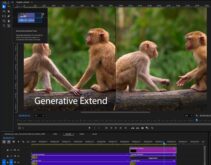I had my own opinions on the matter of which lighting technique to use for streaming. However, I wanted confirmation, so I contacted Roger Chang, who produces two shows for Ziff Davis Media — DL.TV with Patrick Norton and Robert Heron and Cranky Geeks with John Dvorak. Chang has a degree in broadcast journalism and has been producing online videos for about six years.
Chang made a number of interesting points. First, as you would suspect, lighting should match the mood of the show. Because DL.TV and Cranky Geeks are newsy, informational shows, not film noir, Chang uses flat lighting for both. He originally started with a three-light setup, but found that shadows would occur as the subjects moved and turned.
Chang then moved to a bank of fluorescent lights, but found the lighting too flat. Ultimately, he moved to a single fluorescent key light behind the camera, supported by fluorescent rim lighting (also called back lighting) to highlight the head and shoulders and other lights on the background. Chang recommends using soft lighting when shooting for the Web, which minimizes detail and contrast, but he also notes that fluorescent lights, while cooler, are much larger and more expensive.

Figure 1: On DL.TV, producer Roger Chang uses a single fluorescent key light behind the camera, supported by fluorescent rim lighting, to create a flat effect.
When lighting promotional and other videos where shadows are appropriate, Chang cautions against too much contrast between the light and dark regions, which compression enhances and makes more severe. He also notes that three-point lighting and the associated shadows work better with higher-resolution streaming videos such as 320×240 and larger because the contrast would get lost in lower-resolution videos. (For the record, Ziff Davis publishes its shows at 640×480 resolution in multiple formats at data rates that approach 600kbps.)
Here’s a video that pulls a lot of these concepts together.
 Streaming Learning Center Where Streaming Professionals Learn to Excel
Streaming Learning Center Where Streaming Professionals Learn to Excel








